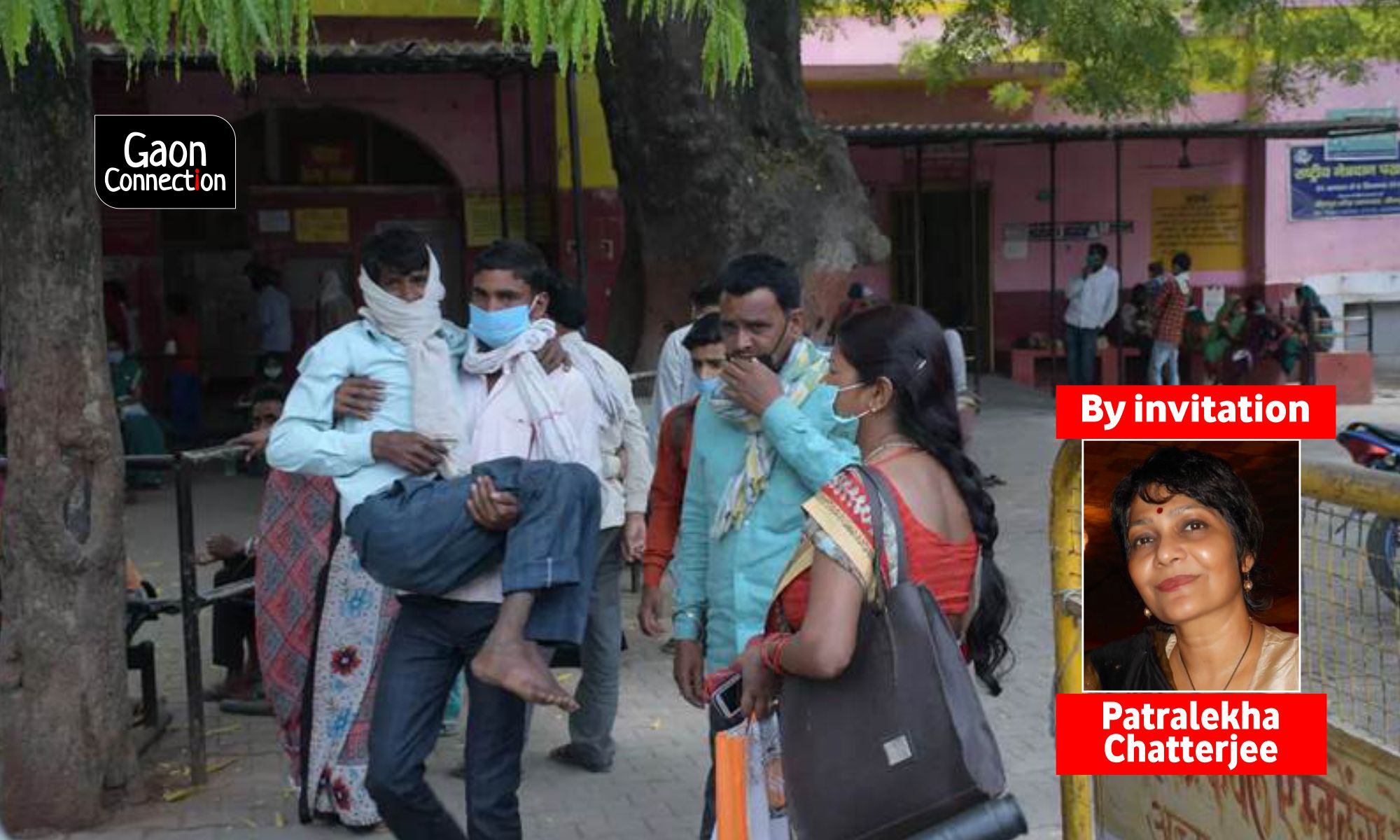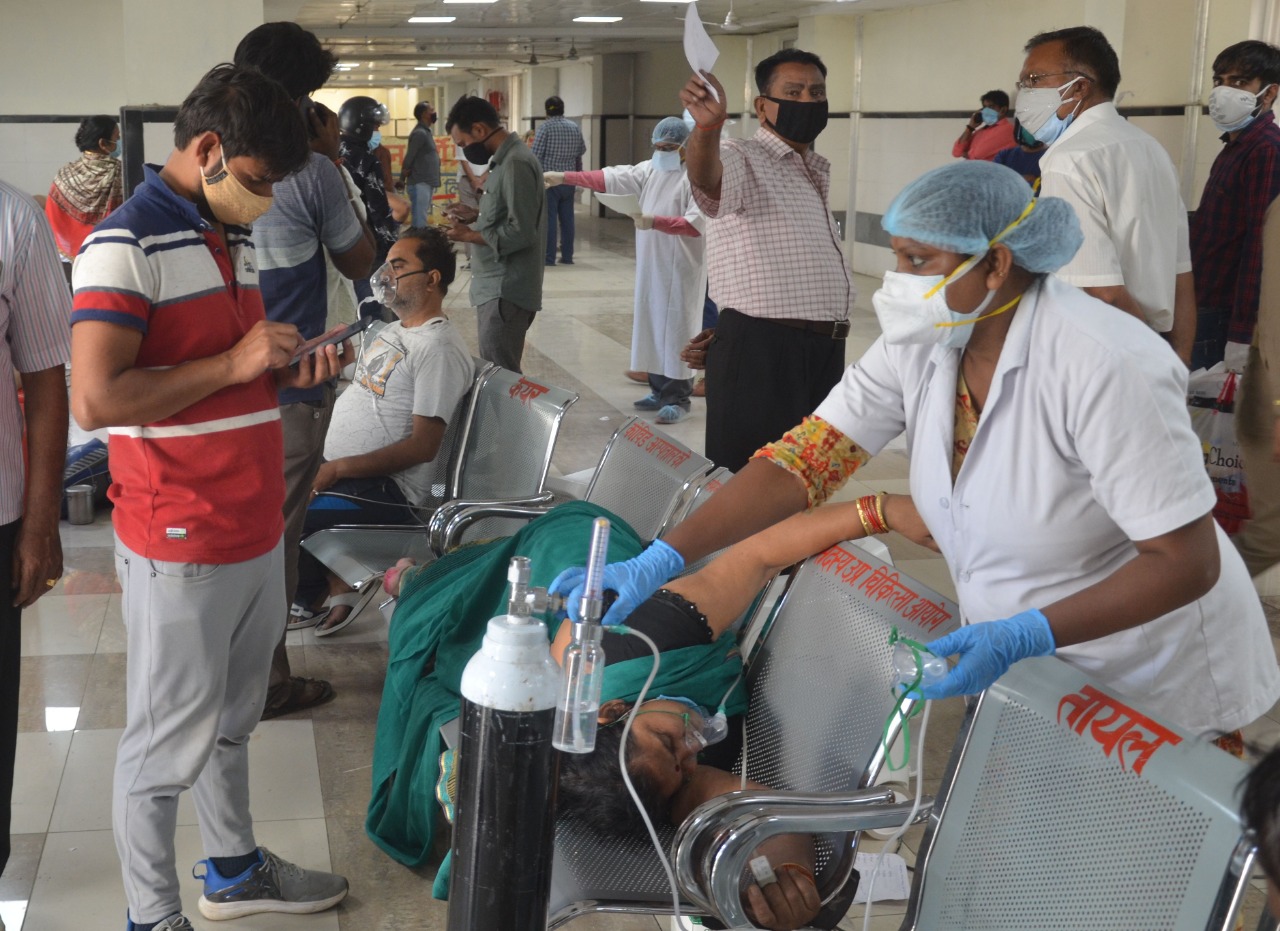Where do villages figure in India’s oxygen strategy?
The virus is moving into villages where 70% of Indians live. Does rural India have a contingency plan?


There is little discussion about a COVID-19 strategy which factors in rural India’s myriad constraints including oxygen availability. Photo: By arrangement
India faces a desperate shortage of medical-grade oxygen. The coronavirus pandemic has made that painfully obvious. While the spotlight is on India’s cities, and the grief, anger, and despair of urban Indians losing their loved ones, often due to lack of access to oxygen, the rural hinterland is not unscarred.
International efforts are under way to help India as the country wrestles with critical oxygen shortages amid a devastating surge in COVID-19 cases. Today, April 28, India recorded a new global high for daily coronavirus cases at 3,60,960.
Where do India’s 649,481 villages figure in the oxygen strategy being planned? How are rural doctors coping? What contingency plans are being made in case of a rural surge to address this critical commodity required for treating patients affected with severe forms of COVID-19.
“In the peripheral rural areas of India, where access to oxygen is hard, oxygen concentrators help save lives. It is easy to operate. In our rural hospital, we have had about half a dozen for some years,” said Yogesh Kalkonde, a public health researcher and neurologist. He works with Society for Education, Action and Research in Community Health (SEARCH) in Dhanoa, rural Gadchiroli in Maharashtra, the state worst-hit by COVID-19.
“Peripheral rural clinics in Gadchiroli without oxygen concentrators have to go to Chandrapur and Nagpur, which are hundred and two hundred kms away to get an oxygen cylinder, and it is not easily available,” Kalkonde pointed out. In Gadchiroli district, there have been about 100 deaths during the first wave. “In the last three weeks itself, we have had more than hundred deaths and five hundred to six hundred cases every day,” he said.
Kalkonde’s hospital in the rural interior has been able to save many lives because of timely supplemental oxygen to the patients. But most rural hospitals in the country are without a reliable oxygen supply.

Oxygen concentrators hold out promise
There is a severe shortage of medical-grade oxygen across hospitals in India. Oxygen concentrators are being widely seen as low-cost, alternative devices to oxygen cylinders, especially in villages. One reason: while cylinders contain a finite amount of oxygen supply, a concentrator can recycle oxygen from the air and deliver it to the patient.
“An oxygen concentrator does not need very skilled people to operate it. You just plug it in. Each concentrator can give five to ten litres of oxygen per minute to a patient. This is good for someone with moderate COVID19 but not if it is severe and it needs more than ten litres,” Kalkonde clarified.
Chronic neglect
Worryingly, there is little discussion about a COVID-19 strategy which factors in rural India’s myriad constraints including oxygen availability.
“This is in keeping with the chronic neglect that rural areas face,” said Kalkonde. We don’t even have disaggregated figures of the number of people who have died of COVID-19 in villages across India. Right now, even as we speak of oxygen, the most in demand commodity, there is no estimate at the district, state or national level of how many oxygen concentrators are needed,” he said.
The oxygen challenge is popping up in many other parts of India. Vipin K. Tripathi, a retired IIT professor, who is associated with Sadbhav, a non-profit, speaks movingly about the situation in Piprai in Lalitpur district in Uttar Pradesh. Tripathi who was born in Piprai regularly visits his village.
Also Read: Six private hospitals in Bhadohi, UP declared as COVID19 centres — five of which have no oxygen
“Until April 15, rural areas of Lalitpur had no cases having symptoms of the coronavirus. But, in the last ten days, there has been a sudden spurt of people getting sick with fever and cold. Lalitpur has testing facilities but it is thirty kilometres from Piprai, and no train stops in Dhaura, our railway station, which is about one and a half kms from Piprai,” said Tripathi.

Just about a year ago, three express trains and two passenger trains would stop at Dhaura. No longer. “Hence accessibility to medical facilities is very low.”
Tripathi said lung related diseases – asthma, TB (tuberculosis), silicosis and seasonal cold – are common in Piprai and other surrounding villages. Many villagers have reported serious breathing problems for which they need supplemental oxygen. That is not available.
A 60 year-old friend of Tripathi had COVID-like symptoms of cold and fever. But he dismissed it as part of his regular asthma condition. His family managed to get an oxygen cylinder from a place 70 kms away. The oxygen helped as long as it lasted. The family tried to get another cylinder through informal channels in a desperate bid to save him but the second cylinder was empty when it arrived. The man died. There have been other deaths due to Covid 19 in surrounding villages.
“A sense of panic is overtaking people. Train services must be restored so that people can access medical facilities in Lalitpur. Oxygen must be made available to all patients in need,” Tripathi said.
Currently, Uttar Pradesh prohibits the supply of oxygen to individuals, “except for those in serious conditions.”
According to a recent order, only hospitals will be allowed to handle oxygen supply.
Prashanth N Srinivas, a medical doctor and public health researcher at the Institute of Public Health, Bengaluru, who works with the Soliga tribal community at BR Hills, Chamarajanagar district, Karnataka, drew attention to other challenges in rural India as it struggled to cope with the pandemic.
“The big issue in this area is the low testing penetration. The primary health system is fairly good here. Test kits are available, but as in many other parts of rural India, they are not always accepted. People are still hesitant to get tested because there is stigma around COVID-19,” he said.
Also Read: During lockdown, rural India faced insurmountable sufferings; 74% satisfied with government
According to him, a lot more advocacy needs to be done. People in rural India, including in this area, don’t always know what mild COVID-19 is, and what is prescribed for such a condition. “They fear being quarantined in an institutional facility if they are diagnosed COVID-19 positive and therefore there is still a lot of reluctance to get tested,” he explained.
“Nobody can say what will happen if a coronavirus patient’s situation turns serious, but logistics is a key issue in contingency planning. The nearest intensive care facility is sixty kms from B R Hills. It takes an hour to get the 108 ambulance,” Srinivas pointed out.
Covid contingency planning for rural areas must factor in the range of uncertainties and primary health centres need to be made robust as an immediate priority. “Here, we have an oxygen concentrator but not all primary health centres do. That must change,” Srinivas said.
That is the point. There are scattered examples of vision but no real country-wide action plan.

Flagging vulnerabilities, oxygen equity
It is not that rural India’s critical vulnerabilities, including its oxygen problem in the time of a pandemic, have not been flagged.
Last November, a Parliamentary committee report had warned “ .. after a steady increase in the number of Covid-19 cases across the country, there has been a downtrend… However, the committee strongly feels that the threat of Covid-19 is still looming large … keeping in view the second and third wave in European countries, and the spike in Delhi.”
The report also noted that the secretary, Department of Health and Family Welfare, said that “adequate primary and secondary healthcare infrastructure needs to be put in place especially in the rural areas by increasing requisite investment on physical infrastructure.”
Writing in The Indian Journal of Public Health in March this year, Nirupam Madaan, Biraj Chand Paul and Randeep Guleria, pointed out that “Many states of India have a traditional rural heartland with a slow pace of development and adoption of modern technology which makes the daily transportation and filling of oxygen cylinders very onerous.”
The article titled Meeting Oxygen Requirements of Rural India: A Self-contained Solution, notes the diverse ground-level challenges — northern and northeastern states have terrain which is difficult to negotiate, liquid oxygen-generating plants are not available in many states, each state is likely to look after its own requirements before agreeing to supply liquid oxygen to other states, and so on. It adds that “The vagaries of supply and demand also add to the uncertainty of supply of this essential commodity to hospitals.” This is exacerbated by wastage in transportation, losses due to evaporation and the inherent risk of fire in storing and transporting oxygen in any form. “PSA (pressure swing absorption) type of oxygen extractors, on the other hand, have various advantages,” the article noted.
The authors point out that oxygen concentrators using PSA have been used in low-resource settings across the world with great success.
However, one caveat is availability of electricity. “Similar endeavors in Malawi, Eritrea, Egypt, and Mongolia have shown good operational success, as long as they are backed by a reliable electric supply.”
Initiatives are afoot. Nachiket Mor, visiting scientist, the Banyan Academy of Leadership in Mental Health, who is on the governing council of Swasth Digital Health Foundation, says that Swasth has focussed on the installation of oxygen concentrators in remote rural locations in many states. Currently, Swasth is trying to raise Rs 1.5 crores and it has reportedly already secured 10,000 concentrators for immediate deployment. There are other similar examples.
But non-profits alone can’t fix the problem.
The Centre and state governments must come out with a coordinated action plan to address rural India’s infrastructure challenges, including availability of medical oxygen.
Lives are at stake. The virus is moving into the hinterland where 70 per cent of Indians live.
Patralekha Chatterjee is an award-winning journalist/columnist, and photographer focussing on development issues. Currently, her writing focusses on the intersection of politics and public policy on a range of inter-linked development issues for Indian and international media.
(Views are personal)

